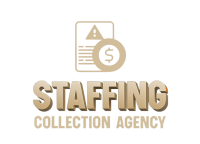Addressing non-payment in seasonal staffing contracts can be a challenging issue for companies. To tackle this problem, a comprehensive recovery system for company funds is essential. This system is designed to efficiently recover outstanding payments from debtors and ensure a fair resolution for all parties involved.
Key Takeaways
- Implementing a 3-phase recovery system can streamline the process of recovering company funds from non-paying debtors.
- Phase One involves initial contact with debtors, skip-tracing, and attempts to resolve the matter through communication.
- Phase Two escalates the recovery process by involving affiliated attorneys and legal actions if necessary.
- Phase Three offers recommendations based on the likelihood of recovery, including options for closure or litigation.
- Understanding the costs and rates associated with recovery efforts is crucial for making informed decisions on pursuing legal action.
Recovery System for Company Funds
Phase One
Upon initiating Phase One, immediate action is taken to address non-payment. Within 24 hours of account placement, a multi-faceted approach is launched:
- A series of four letters is dispatched via US Mail to the debtor.
- Comprehensive skip-tracing and investigation are conducted to secure optimal financial and contact data.
- Persistent contact efforts ensue, utilizing phone calls, emails, text messages, and faxes.
Daily attempts to engage with debtors span the initial 30 to 60 days, aiming for a swift resolution. Should these efforts not yield results, the transition to Phase Two is seamless, involving our network of affiliated attorneys in the debtor’s locale.
The goal is clear: to recover company funds efficiently while preparing for escalated measures if necessary.
Phase Two
Upon escalation to Phase Two, the case is transferred to a local attorney within our network. Immediate action is taken to assert the seriousness of the debt recovery process. The attorney drafts a series of demand letters on law firm letterhead, signaling a shift in tone from amicable resolution to legal enforcement.
- The attorney’s office begins persistent contact attempts, combining letters with direct phone calls.
- If these intensified efforts do not yield results, a detailed report is prepared for the client.
This phase underscores the transition from internal recovery efforts to external legal measures, marking a critical juncture in the recovery system.
Should Phase Two prove ineffective, the groundwork is laid for a decisive recommendation in Phase Three. The client is kept informed throughout, ensuring transparency and preparedness for potential litigation.
Phase Three
Upon reaching Phase Three, the path forward hinges on the feasibility of fund recovery. If prospects are dim, we advise case closure, absolving clients of any financial obligation to our firm or affiliated attorneys. Conversely, should litigation appear viable, clients face a pivotal choice.
Litigation entails upfront legal costs, typically between $600 to $700, which are necessary to initiate court proceedings. These costs cover court fees, filing charges, and other related expenses. Upon payment, our attorneys will aggressively pursue the owed amounts, including the costs of filing the lawsuit.
Should litigation efforts not yield the desired results, the case concludes without further financial responsibility for the client.
Our fee structure is straightforward and competitive, with rates varying based on claim quantity and age. Here’s a concise breakdown:
| Claims Submitted | Accounts < 1 Year | Accounts > 1 Year | Accounts < $1000 | Attorney Placed Claims |
|---|---|---|---|---|
| 1-9 | 30% | 40% | 50% | 50% |
| 10+ | 27% | 35% | 40% | 50% |
Clients may also opt to continue standard collection activities if they choose not to engage in legal action. This includes persistent communication efforts such as calls, emails, and faxes to secure payment.
Frequently Asked Questions
What is the Recovery System for Company Funds?
The Recovery System for Company Funds consists of three phases: Phase One involves sending letters to debtors, skip-tracing, and attempting to contact debtors for resolution. Phase Two includes forwarding the case to affiliated attorneys for legal action. Phase Three involves recommending closure of the case or proceeding with litigation.
What happens if recovery of funds is not likely in Phase Three?
If recovery of funds is not likely in Phase Three, two options are presented: closure of the case with no owed fees, or proceeding with litigation. If litigation is chosen, upfront legal costs must be paid, and if unsuccessful, no fees are owed.
What are the rates for DCI’s collection services?
DCI provides competitive collection rates based on the number of claims submitted within the first week. Rates vary for different account ages and amounts, ranging from 27% to 50% of the amount collected.
What actions are taken in Phase One of the Recovery System?
Phase One involves sending letters to debtors, skip-tracing, investigating debtor information, contacting debtors for resolution, and making daily attempts to resolve accounts. If unsuccessful, the case proceeds to Phase Two.
What occurs in Phase Two of the Recovery System?
In Phase Two, the case is forwarded to a local attorney who sends letters demanding payment, attempts to contact the debtor, and provides recommendations for next steps if resolution is not achieved.
What are the options if legal action is recommended in Phase Three?
If legal action is recommended in Phase Three, the options include proceeding with litigation by paying upfront legal costs or allowing standard collection activities. If litigation fails, no fees are owed.





